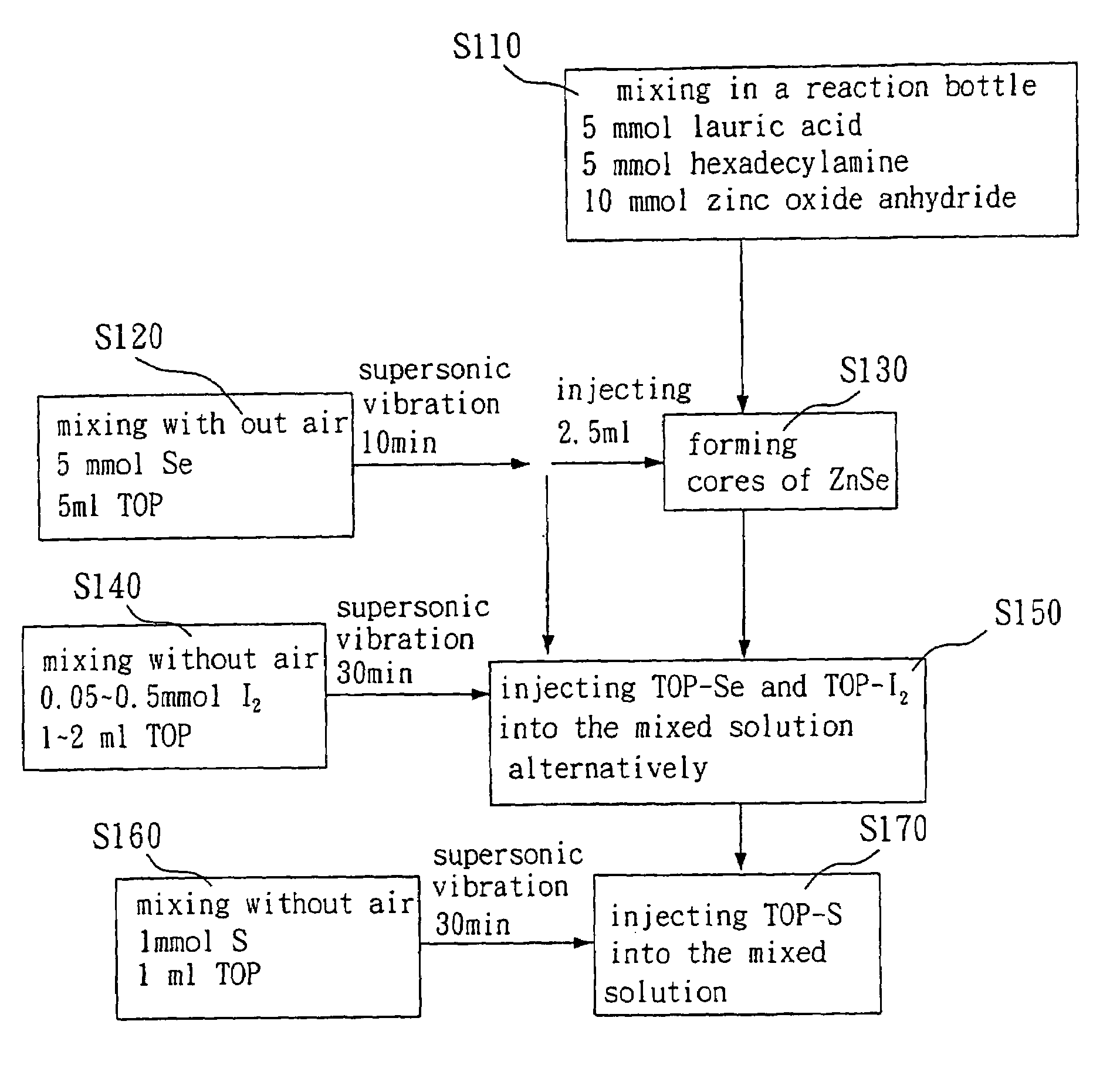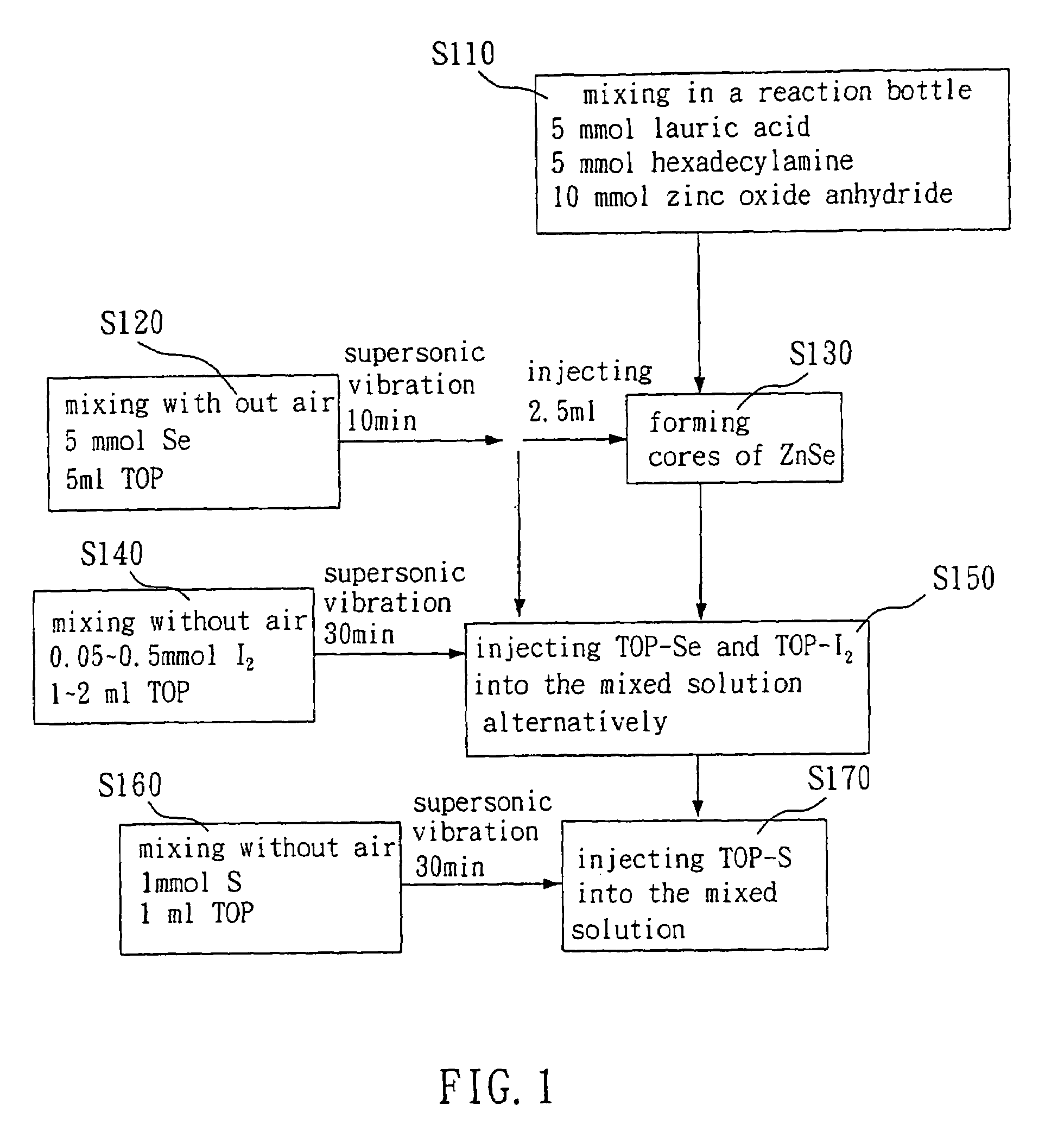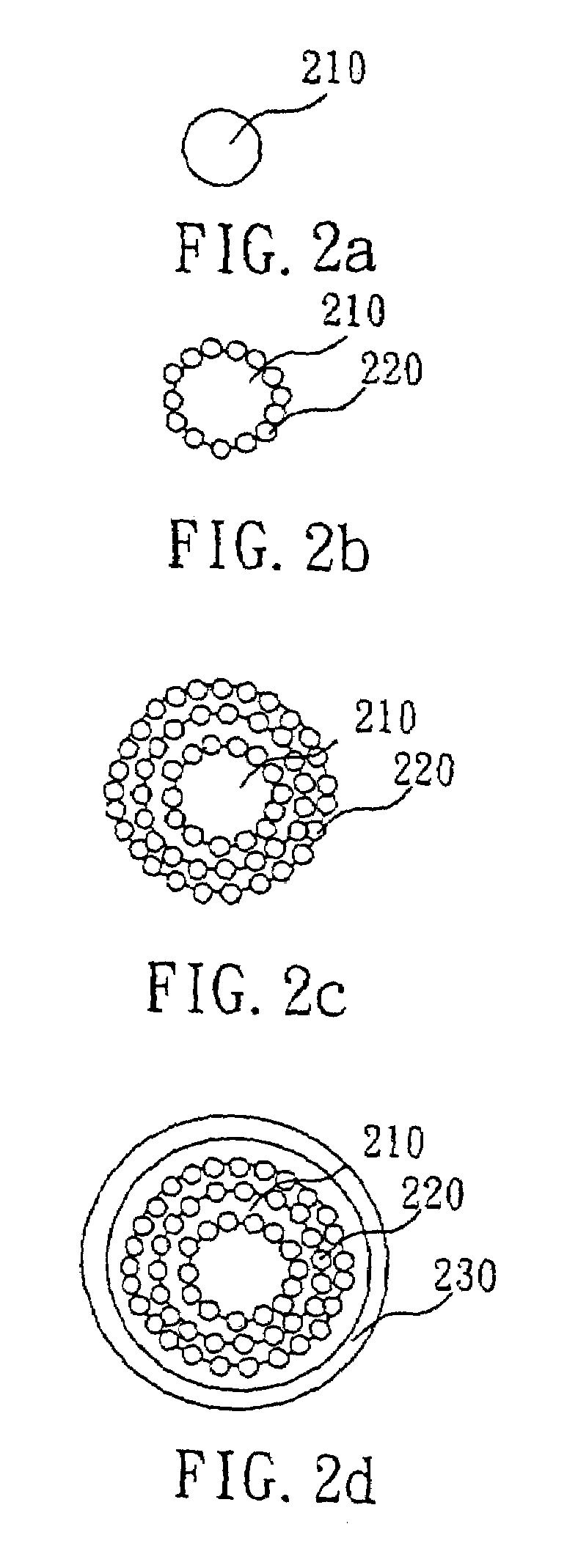Method for doping quantum dots
a quantum dots and quantum dots technology, applied in the field of quantum dots doping methods, can solve the problems of poor crystal phase of quantum dots, inability to carry out large-scale doping, time-consuming and laborious, etc., and achieve the effect of enhancing the dispersion of dopants
- Summary
- Abstract
- Description
- Claims
- Application Information
AI Technical Summary
Benefits of technology
Problems solved by technology
Method used
Image
Examples
embodiment 1
of Iodine Element into ZnSe Quantum Dots by Multi-Layer Wrap Doping
[0021]The wavelength of the radiation of CdSe quantum dots ranges from 500 to 800 nm, and is nearly proportional to the particle size. However, the wavelength of the radiation of ZnSe quantum dots ranges from 400 to 450 nm, and cannot be red shifted to other wave band by simply adjusting the particle size. Therefore, it is necessary to change the wave band of radiation by using the doping technique. The process for preparing ZnSe quantum dots with multi-layer wrapping shell is shown in FIG. 1.
[0022]First, 5 mmol of lauric acid, 5 mmol of hexadecylamine (HDA), and 10 mmol of zinc oxide anhydride are mixed and heated to 280° C. under argon atmosphere in a reaction bottle in step S110. Simultaneously, 5 mmol of Se and 5 ml of tri-n-octylphosphine (TOP) are mixed and dispersed by supersonic vibration for 10 minutes in an environment without air in step S120. Afterwards, 2.5 ml of solution prepared in step S120 is injecte...
PUM
| Property | Measurement | Unit |
|---|---|---|
| temperature | aaaaa | aaaaa |
| particle size | aaaaa | aaaaa |
| particle size | aaaaa | aaaaa |
Abstract
Description
Claims
Application Information
 Login to View More
Login to View More - R&D
- Intellectual Property
- Life Sciences
- Materials
- Tech Scout
- Unparalleled Data Quality
- Higher Quality Content
- 60% Fewer Hallucinations
Browse by: Latest US Patents, China's latest patents, Technical Efficacy Thesaurus, Application Domain, Technology Topic, Popular Technical Reports.
© 2025 PatSnap. All rights reserved.Legal|Privacy policy|Modern Slavery Act Transparency Statement|Sitemap|About US| Contact US: help@patsnap.com



